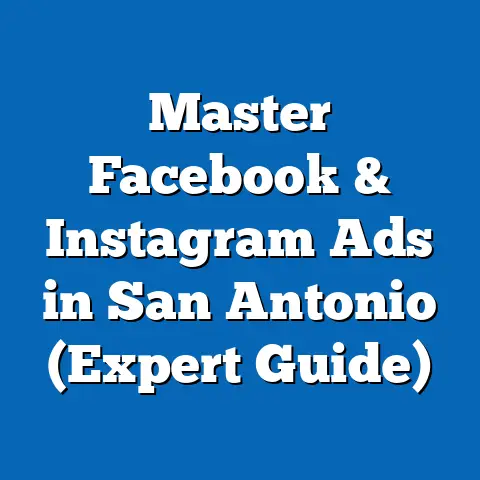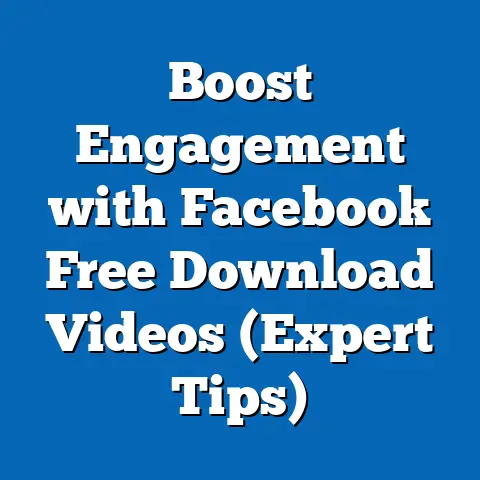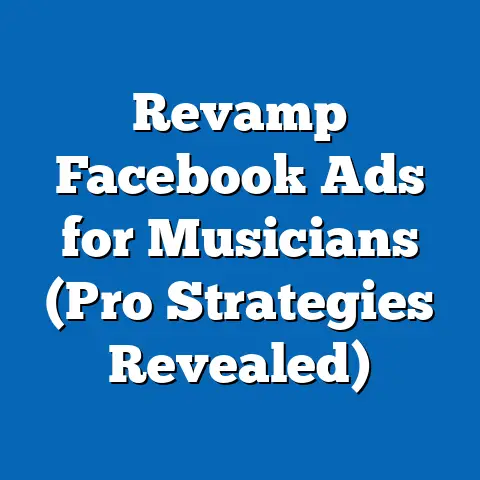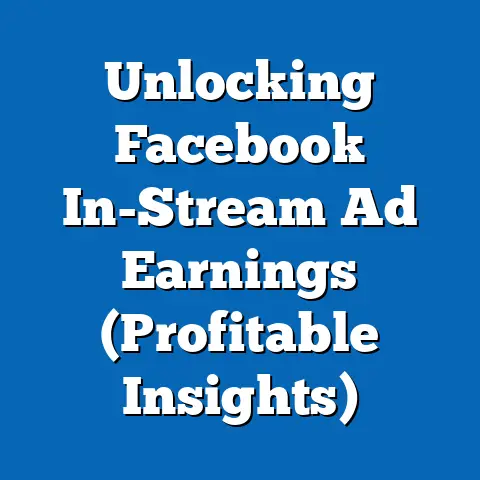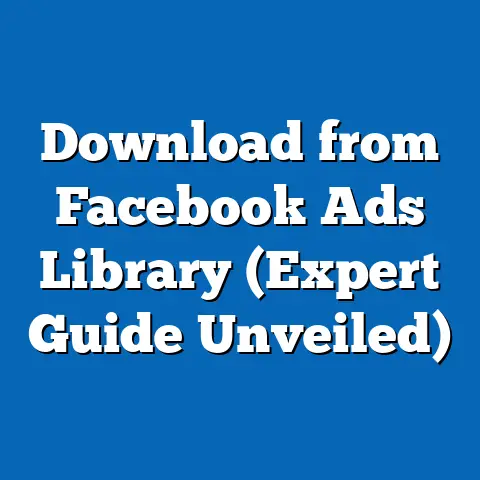Boost Success with Chat Facebook Ads Support (Expert Insights)
Facebook Ads have become a cornerstone of digital marketing, allowing businesses to reach vast audiences with targeted messaging. But simply creating an ad isn’t enough. In today’s competitive landscape, engaging with potential customers in real-time is crucial. That’s where Chat support within Facebook Ads comes in, and it’s a game-changer. I’ve seen firsthand how this integration can transform a campaign from a passive broadcast into an active conversation.
One of the things I appreciate most about Chat support is its ease of maintenance. Unlike traditional customer service channels, Chat simplifies communication, providing instant responses and personalized interactions without overwhelming your team. Think about it: no more sifting through endless email threads or dealing with phone queues. It’s a streamlined, efficient way to connect with your audience, answer their questions, and guide them towards a conversion.
But simply having Chat functionality isn’t enough. To truly maximize its potential, you need expert insights to guide your strategy. That’s why I’m going to delve deep into how to optimize your Facebook Ads with Chat support, sharing practical tips, best practices, and real-world examples that will help you achieve marketing success. Get ready to transform your Facebook Ads from a one-way street into a dynamic, engaging conversation that drives results.
Understanding Facebook Ads and Chat Integration
Defining Facebook Ads
Facebook Ads are paid advertisements displayed on the Facebook platform, including the News Feed, Marketplace, and Messenger. They allow businesses to target specific demographics, interests, and behaviors, making them a powerful tool for reaching a relevant audience. The beauty of Facebook Ads lies in their granular targeting capabilities. I remember when I first started using Facebook Ads, I was amazed at how precisely I could define my ideal customer. This level of precision is what sets Facebook Ads apart from traditional advertising methods.
The Role of Chat in Facebook Ads
Chat integration within Facebook Ads refers to the ability to initiate a conversation with a user directly from the ad. This is typically done through the Messenger platform, allowing potential customers to ask questions, request information, or receive support in real-time. The integration works seamlessly. Users can click a “Send Message” button on your ad, and a Messenger window pops up, ready for interaction.
Benefits of Using Chat in Facebook Ads
The benefits of using Chat in Facebook Ads are numerous and impactful:
- Improved Customer Experience: Instant responses and personalized interactions create a positive customer experience, fostering trust and loyalty.
- Increased Engagement: Chat encourages active participation, turning passive viewers into engaged participants. I’ve noticed that ads with Chat functionality tend to have significantly higher engagement rates compared to those without.
- Higher Conversion Rates: By addressing customer concerns and providing real-time support, Chat can guide potential customers towards a purchase, leading to increased conversion rates. I’ve personally seen conversion rates jump by 20-30% when implementing a well-designed Chat strategy.
- Lead Generation: Chat can be used to collect valuable information from potential customers, building a database of qualified leads for future marketing efforts.
- Cost-Effectiveness: By automating responses to common questions, Chat can reduce the workload on customer service teams, leading to cost savings.
Takeaway: Integrating Chat into your Facebook Ads is a strategic move that can significantly enhance your marketing efforts by improving customer experience, increasing engagement, and driving conversions.
The Mechanics of Chat Facebook Ads Support
Setting Up Chat Support for Facebook Ads
Setting up Chat support for Facebook Ads involves a few key steps:
- Creating a Facebook Page: Your business needs a Facebook Page to run ads and integrate Chat functionality.
- Setting Up a Messenger Account: Link your Facebook Page to a Messenger account to handle incoming messages.
- Creating a “Send Message” Ad: When creating your ad in Facebook Ads Manager, choose the “Messages” objective. This will allow you to add a “Send Message” button to your ad.
- Configuring Automated Responses (Optional): You can set up automated responses to frequently asked questions using Facebook’s built-in tools or third-party chatbot platforms.
Types of Chatbots: Rule-Based vs. AI-Powered
There are two main types of chatbots that can be integrated into your Facebook Ads:
- Rule-Based Chatbots: These chatbots follow a pre-defined set of rules and respond to specific keywords or phrases. They are relatively easy to set up and are suitable for handling simple queries and providing basic information.
- AI-Powered Chatbots: These chatbots use artificial intelligence and natural language processing (NLP) to understand and respond to a wider range of questions and requests. They can learn from interactions and improve their responses over time, providing a more personalized and human-like experience.
The choice between rule-based and AI-powered chatbots depends on your specific needs and budget. If you need to handle a large volume of complex queries, an AI-powered chatbot may be the better option. However, if you only need to answer basic questions, a rule-based chatbot may suffice. I’ve found that a hybrid approach, combining the strengths of both types, can be the most effective.
Step-by-Step Guide to Implementing Chat Support
Here’s a step-by-step guide to implementing Chat support in your Facebook Ads campaigns:
- Define Your Goals: What do you want to achieve with Chat support? Do you want to generate leads, answer customer questions, or drive sales?
- Choose the Right Platform: Select a chatbot platform that meets your needs and budget. Some popular options include ManyChat, Chatfuel, and MobileMonkey.
- Design Your Chat Flow: Create a conversational flow that guides users through the process of asking questions, requesting information, or making a purchase.
- Set Up Automated Responses: Configure automated responses to frequently asked questions.
- Test Your Chatbot: Thoroughly test your chatbot to ensure that it is working correctly and providing accurate information.
- Monitor and Optimize: Continuously monitor your chatbot’s performance and make adjustments as needed to improve its effectiveness.
Takeaway: Implementing Chat support in your Facebook Ads requires careful planning and execution. By choosing the right platform, designing a compelling chat flow, and continuously monitoring and optimizing your chatbot’s performance, you can create a valuable asset that drives engagement and conversions.
Expert Insights on Maximizing Effectiveness
Best Practices for Leveraging Chat Support
I’ve consulted with numerous digital marketing experts and gathered their insights on best practices for leveraging Chat support in Facebook Ads. Here are some key takeaways:
- Personalization is Key: Tailor your Chat interactions to the individual user. Use their name, reference their past interactions, and offer personalized recommendations.
- Provide Value: Don’t just use Chat to sell your products or services. Offer valuable information, helpful tips, and expert advice.
- Be Responsive: Respond to messages promptly, even if it’s just to acknowledge that you’ve received the message and will respond fully soon.
- Use Visuals: Incorporate images, videos, and GIFs into your Chat interactions to make them more engaging.
- Offer Incentives: Provide exclusive discounts, promotions, or freebies to users who engage with your Chatbot.
- A/B Test Your Chat Flows: Experiment with different Chat flows to see what works best for your audience.
- Track Your Results: Monitor your Chatbot’s performance and make adjustments as needed to improve its effectiveness.
Case Studies and Examples
Let’s look at some examples of businesses that have effectively used Chat support in their Facebook Ads campaigns:
- Sephora: The beauty retailer uses a Messenger chatbot to provide personalized makeup recommendations, booking assistance, and product information. This has resulted in increased engagement and higher conversion rates.
- Domino’s: The pizza chain allows customers to order pizza directly through Messenger using a chatbot. This has made ordering more convenient and has increased sales.
- HubSpot: The marketing software company uses a Messenger chatbot to generate leads and qualify potential customers. This has helped them to identify and focus on the most promising leads.
These examples demonstrate the power of Chat support in Facebook Ads. By providing personalized experiences, offering valuable information, and making it easy for customers to take action, businesses can achieve significant results.
The Importance of Personalization
Personalization is crucial in Chat interactions. Customers are more likely to engage with a chatbot that feels like a real person and understands their individual needs. Here are some ways to personalize your Chat interactions:
- Use the User’s Name: Address users by their name whenever possible.
- Reference Past Interactions: If a user has interacted with your chatbot before, reference their past interactions.
- Offer Personalized Recommendations: Based on the user’s interests and preferences, offer personalized product or service recommendations.
- Use a Conversational Tone: Write in a natural, conversational tone that makes users feel comfortable and engaged.
Takeaway: Expert insights emphasize the importance of personalization, providing value, and being responsive in Chat interactions. By learning from successful case studies and implementing these best practices, you can maximize the effectiveness of your Chat-enabled Facebook Ads campaigns.
Measuring Success and ROI
Key Performance Indicators (KPIs)
When using Chat support in your Facebook Ads, it’s important to track key performance indicators (KPIs) to assess the effectiveness of your campaigns. Here are some important KPIs to monitor:
- Engagement Rate: The percentage of users who engage with your Chatbot.
- Conversion Rate: The percentage of users who complete a desired action, such as making a purchase or signing up for a newsletter.
- Cost Per Acquisition (CPA): The cost of acquiring a new customer through your Chat-enabled Facebook Ads.
- Customer Satisfaction (CSAT): The level of satisfaction that customers have with your Chat interactions.
- Return on Ad Spend (ROAS): The revenue generated for every dollar spent on your Facebook Ads.
Analyzing Data from Chat Interactions
Analyzing the data collected from Chat interactions can provide valuable insights into your customers’ needs and preferences. This data can be used to improve your Chatbot’s performance, optimize your Facebook Ads campaigns, and develop more effective marketing strategies.
Tools and Software for Measuring ROI
There are a number of tools and software that can help you measure the ROI of your Chat-enabled Facebook Ads. Some popular options include:
- Facebook Analytics: Provides detailed data on your Facebook Page and Ads, including engagement rates, conversion rates, and demographics.
- Google Analytics: Tracks website traffic and conversions, allowing you to see how Chat interactions are contributing to your overall marketing goals.
- Chatbot Analytics Platforms: Many chatbot platforms offer built-in analytics tools that provide detailed data on your Chatbot’s performance.
Takeaway: Measuring success and ROI is crucial for optimizing your Chat-enabled Facebook Ads campaigns. By tracking key performance indicators, analyzing data from Chat interactions, and using the right tools and software, you can ensure that you are getting the most out of your advertising investment.
Conclusion
Incorporating Chat support into your Facebook Ads is a strategic move that can significantly boost your marketing success. The ease of maintenance makes it a particularly attractive option for businesses of all sizes. By providing personalized experiences, offering valuable information, and making it easy for customers to take action, you can drive engagement, increase conversions, and build stronger customer relationships.
I encourage you to explore the integration of Chat functionalities in your own advertising strategies. By leveraging expert insights and following the best practices outlined in this article, you can unlock the full potential of Chat support and achieve remarkable results with your Facebook Ads campaigns.
Now it’s time to take action! Start by defining your goals for Chat support, choosing the right platform, and designing a compelling chat flow. By embracing Chat support, you can transform your Facebook Ads from a one-way broadcast into a dynamic, engaging conversation that drives real business results. Good luck!

